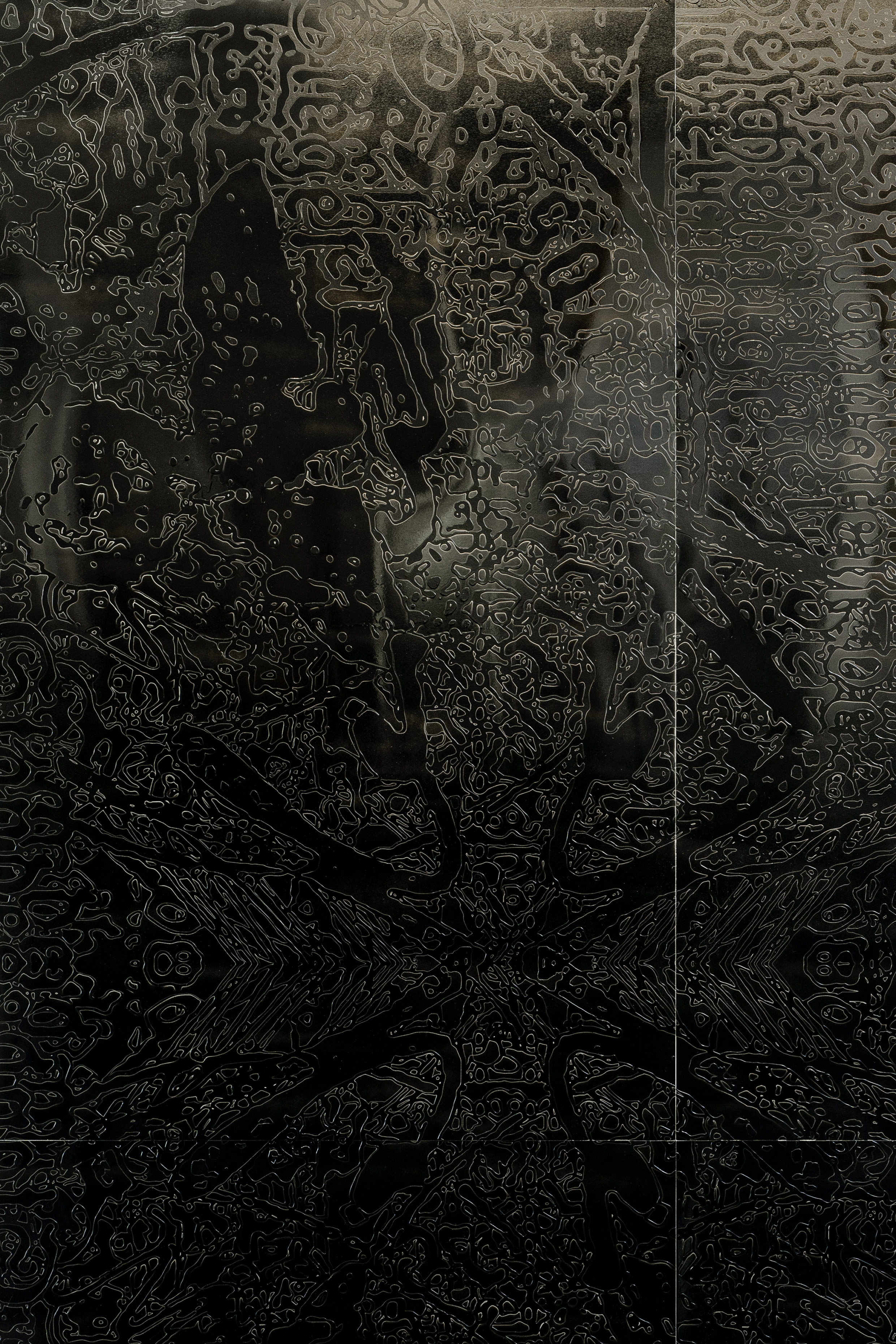In the German Reich between 1933 and 1945, the so-called „Ahnenpass“ (ancestry passport) served as proof of the „Aryan descent“ of its bearers and assigned them the bureaucratically verified status of legitimate citizens of the nation state at that time. The work Soft Pass is an in-depth exploration of my great-grandfather‘s Ahnenpass, and features black reflective reliefs together with photographs taken from them. The basis for the reliefs is a so-called composite photograph, in which all double pages of the document were photographically digitised and layered on top of each other — a technique used in 19th century
In the German Reich between 1933 and 1945, the so-called „Ahnenpass“ (ancestry passport) served as proof of the „Aryan descent“ of its bearers and assigned them the bureaucratically verified status of legitimate citizens of the nation state at that time.
The work Soft Pass is an in-depth exploration of my great-grandfather‘s Ahnenpass, and features black reflective reliefs together with photographs taken from them.
The basis for the reliefs is a so-called composite photograph, in which all double pages of the document were photographically digitised and layered on top of each other — a technique used in 19th century eugenics and popularised by the racial ideologist Francis Galton. In this photographic process, several portraits of members of different groups of people were mounted on top of each other with the intention of illustrating aesthetic and phenotypical averages and lending legitimacy to an ideology of race and purity.
By applying this technique to the ancestral passport, its graphically and textually dominant structures emerge, disturbed and crossed by handwritten entries, signatures and the eagle stamps. These, in turn, were transferred in sections and fragments onto aluminium and sealed with black lacquer — thus showing a different, appropriated version of the document, on whose shiny surface the viewers and spaces are reflected.
The photographs show reflections of the studio and the environment in which the individual relief pieces were created. The camera makes the relief structure visible and legible in a new way, while the shadows and schemes of figures, spaces and landscapes are inscribed in the document. In a sense, photography first activates the reliefs, which in this process function like photographic negatives, and stops for a brief moment the potentially eternal process of deconstruction, digestion, appropriation and transformation.
As part of the Wüstenrot Foundation‘s Documentary Photography Award 14, Soft Pass is a reflection on heritage, identity and the identification processes that still largely structure what is perceived as socially legitimate proof of ID today. Understood in this way, the work is neither a coming to grips with the past nor a retroactive examination of a historical phase. It is the activation and ruinous exploitation of an object that is witness to the most far-reaching and consequential form of identity creation we know in our modern history. Consequently, it condenses in the most intense way that which still today - albeit changed - has an unbroken influence on the condition of the self and its existence: the view that identities are not processes but fixed, and the misunderstanding that just because they are necessary, they must also be adequate or exist at all.
















